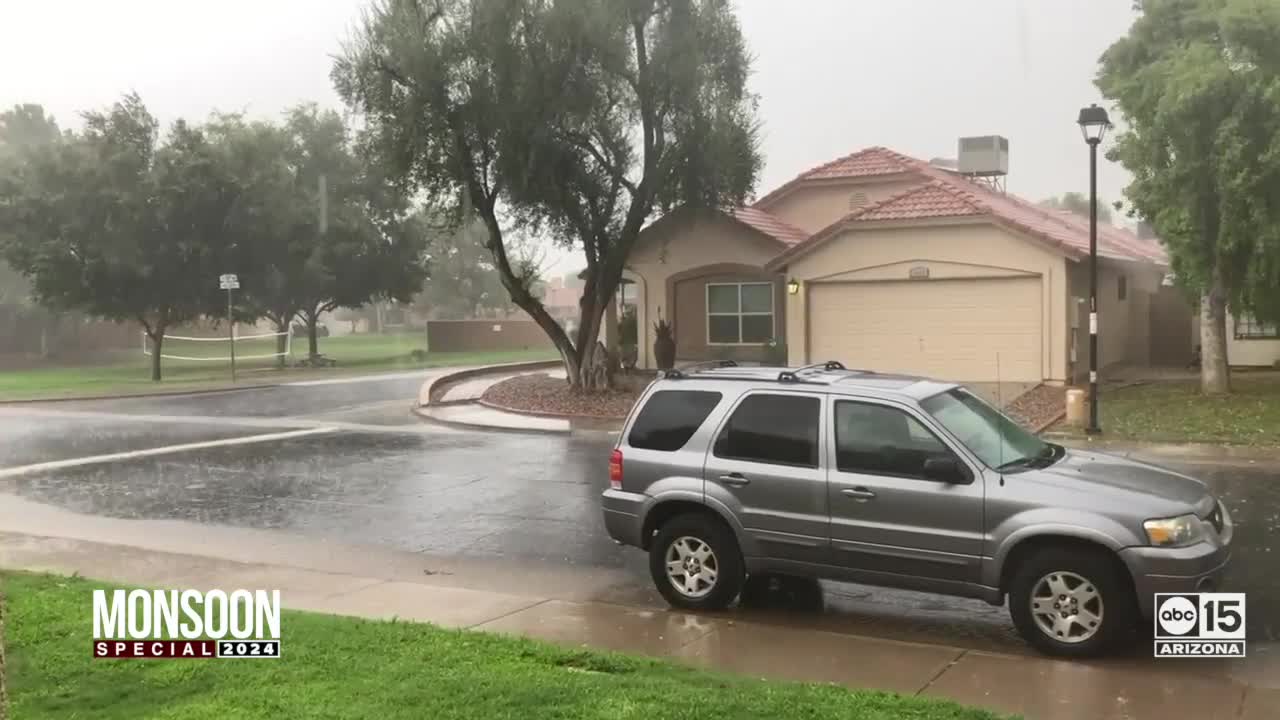PHOENIX — Each summer, thunderstorms tower in our otherwise sunny Arizona sky. Winds shift out of the south and southeast, bringing moisture in all the way from the Gulf of Mexico. That moisture rises and forms thunderstorms in the heat of the day. This is our monsoon.
Much of Arizona typically receives 30 to 50 percent of its annual rainfall during the monsoon months of June, July, August, and September, which helps replenish our dry land and diminish wildfire threats.

But, the monsoon as we know it is changing. As our atmosphere gets hotter with climate change, it’s able to essentially hold more water vapor and that’s altering how our monsoon behaves.
“We don't get as many storms, but when they do come, they're tending to produce higher rainfall amounts, more intense rainfall, and more intense winds,” says Dr. Christopher Castro with the Hydrology and Atmospheric Sciences Department at the University of Arizona.
That’s exactly what we saw play out here in Phoenix last summer. It was our hottest and driest monsoon on record. Sky Harbor only received 0.15 inches of rain. That’s more than 2 inches below normal.
But, what is considered a “normal” amount of monsoon rain has changed a lot in the past 50 years.
Every 10 years, new normals are calculated based on a rolling 30-year average. Our latest update came in 2021, giving us a new average that is based on rainfall data from 1991 to 2020.
This new normal showed an average rainfall in Phoenix for the monsoon season of 2.43 inches of rain. That’s more than a quarter of an inch drier than the previous average, which is a big difference here in the desert!
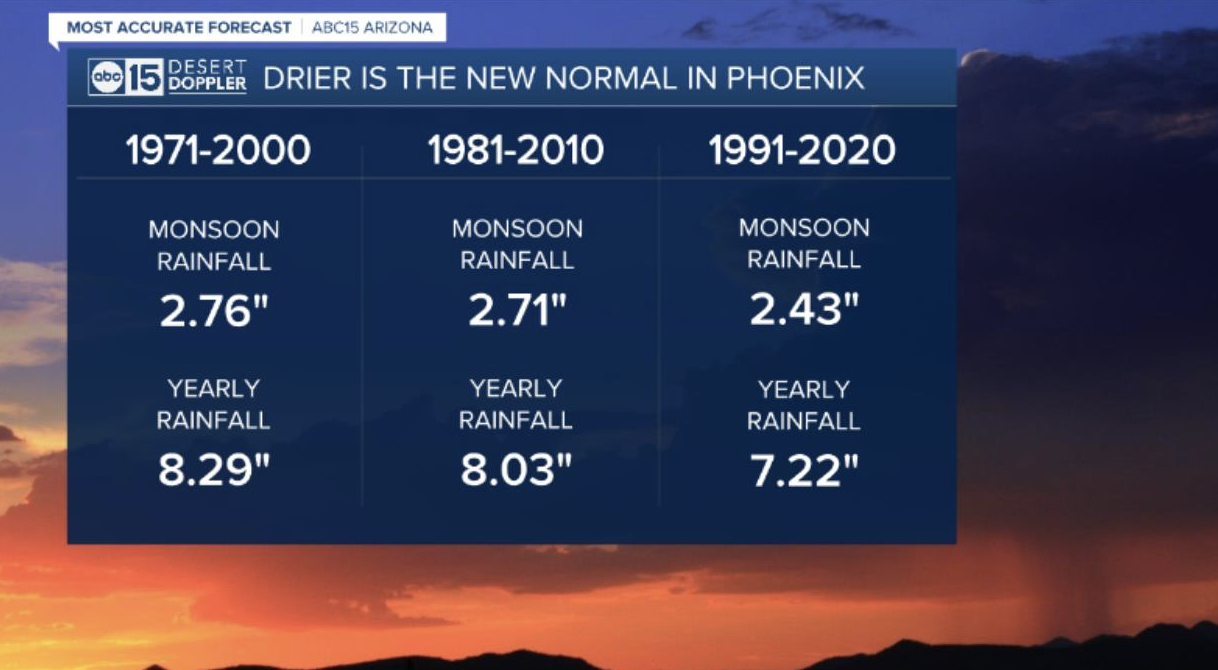
Castro and his team at the University of Arizona are leading the way when it comes to research on how climate change is impacting our monsoon. Although not yet published in scientific peer-reviewed journals, they have run experiments simulating how storms move down into the Valley.
They have discovered that a greater number of green spaces, like parks, golf courses, and green landscaping, are leading to fewer storms making it down into the city.
“The presence of all these watered areas is suppressing the amount of instability in the atmosphere. So, it's harder to initiate storms from the outflow boundaries,” he says.
So, as storms try to move down off of the Mogollon Rim, they are now often getting diverted around the periphery of the Phoenix metro instead of rolling right through it like they used to.
Scientists like Castro have also seen a broadening of our monsoon ridge, which is impacting our monsoon, too.
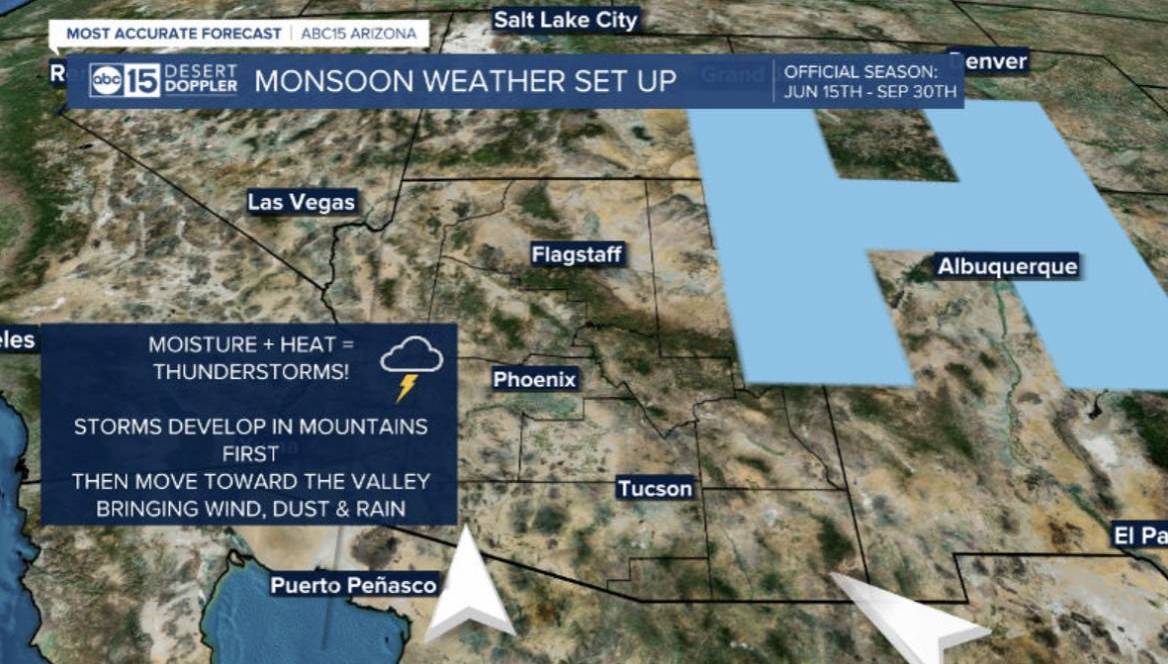
It’s the ridge of high pressure, which sets up near the Four Corners during the summer, that allows monsoon moisture to flow in.
“What we've observed in the last 20 years or so, is that the monsoon ridge is growing more intense and more spatially expansive. The bigger and more expansive that ridge is, the more propensity there is for the air to sink from the upper atmosphere. So. it suppresses the atmospheric instability and it makes storms harder to form,” Castro says.
That’s exactly what happened last year. As that ridge of high pressure sat over Arizona, it suppressed storm formation and made it much hotter. Our 2023 monsoon season was the hottest and driest on record in Phoenix.
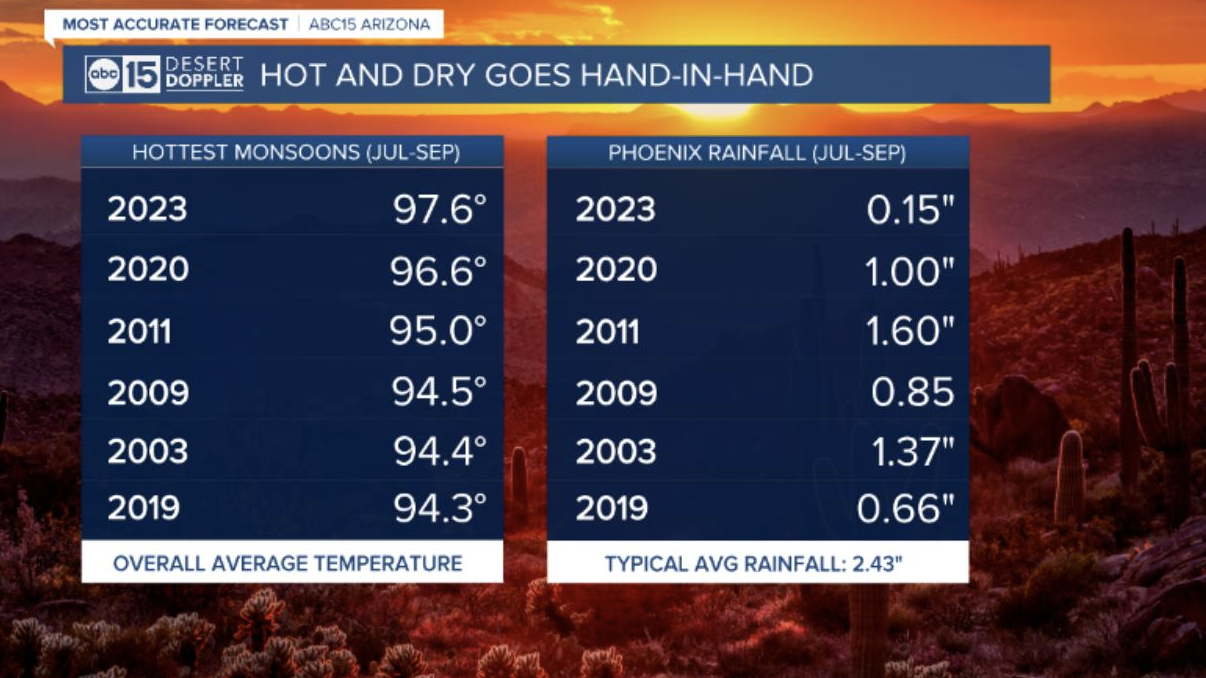
2020 was also a so-called “non-soon” with only 2 days of measurable rain in Phoenix. That year, we received 90% of our monsoon rain (0.90 inches) in just 2 hours with one particularly bad storm the night of August 20, 2020.
Castro says that’s the fingerprint of climate change in the desert.
"It's really about the extremes. The monsoon is, generally all the way around, getting more extreme. So, when we get our heat waves now those are more intense than they used to be and when it rains, it may not rain as frequently as it used to, but it tends to be more intense," Castro says.
That intensity makes it harder for us to adapt.
When it’s extreme heat, we see more heat-related deaths. We had 987 heat-related deaths across Arizona last year. 645 of those happened in Maricopa County, mostly during the hottest and driest monsoon on record.
When it’s extreme rainfall, we see more flash flooding and complete destruction near wildfire burn scars since the charred ground can no longer absorb water.
“From the water supply perspective, it's bad news for recharge of the groundwater table. If you're drying out the soils and then realizing your precipitation with only a few intense events, more of that precipitation is likely to run off. There’s also a greater danger for wildfires to happen and that totally changes the characteristics of the permeability of the soil. Then, when it rains, that water will immediately wash off very similar to a landslide,” Castro says.
A bigger, broader monsoon ridge also deflects atmospheric disturbances, known as inverted troughs, from tracking through Arizona.
Those disturbances often serve as triggers to get widespread rain and thunderstorm activity going during the monsoon.
“The expanded monsoon ridge is suppressing the path of those inverted troughs more to the south, so the number of inverted troughs is decreasing. So, the frequency of big precipitation events is decreasing. But when they do occur, they're occurring in a more moist environment that is favorable for heavier amounts of precipitation,” says Castro.
We’re seeing similar impacts across the country as the number of heavy downpours increases in this warming world.

While downpours are increasing, periods of drought are increasing too.
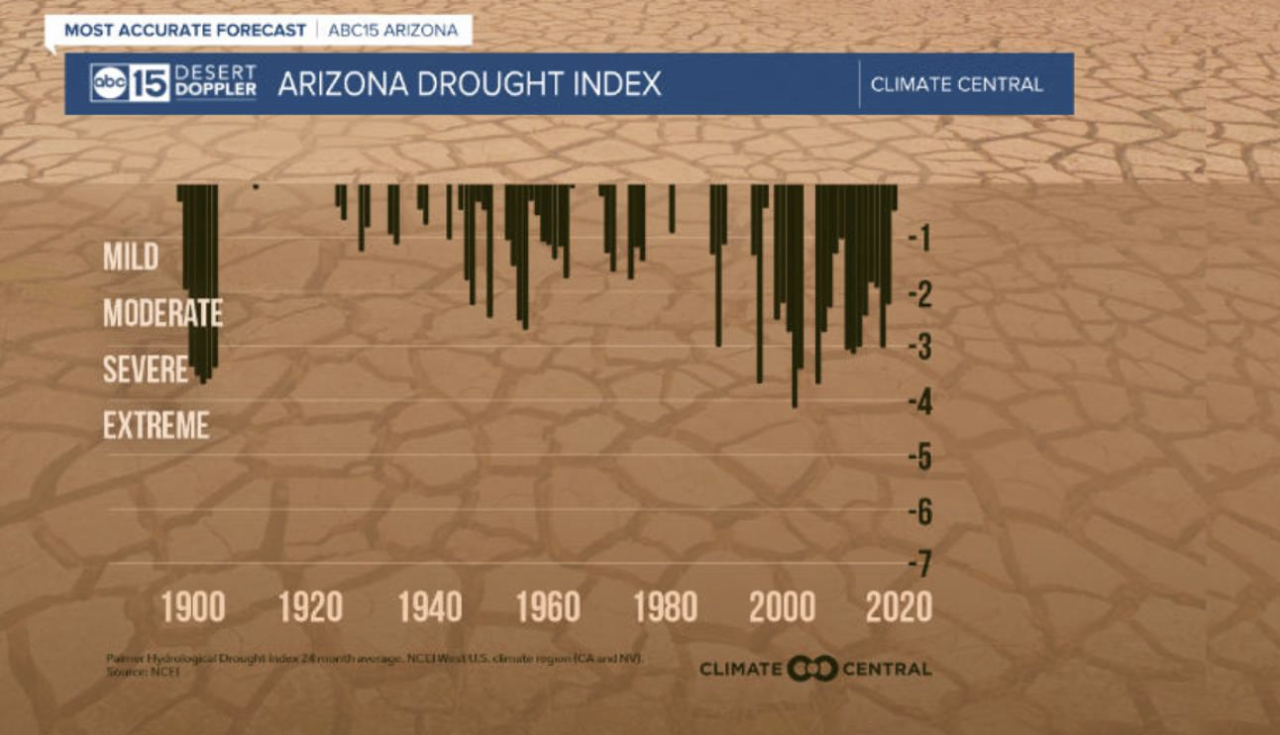
So we are increasing both of these extremes as our climate changes.
Castro says, “We’re going into a world where we have these more dramatic swings in climate variability, whether it's winter or summer. There's been this term coined climate whiplash, you go from one extreme to another, either between seasons or within a season. This is devastating from the standpoint of climate and our resiliency to the natural climate because if we're exceeding the ranges of which our natural and human systems can cope with these whiplash swings, you're going to go from one year where a dam nearly fails because it's flooded to a year of devastating wildfires and the ecosystem cannot recover.”



